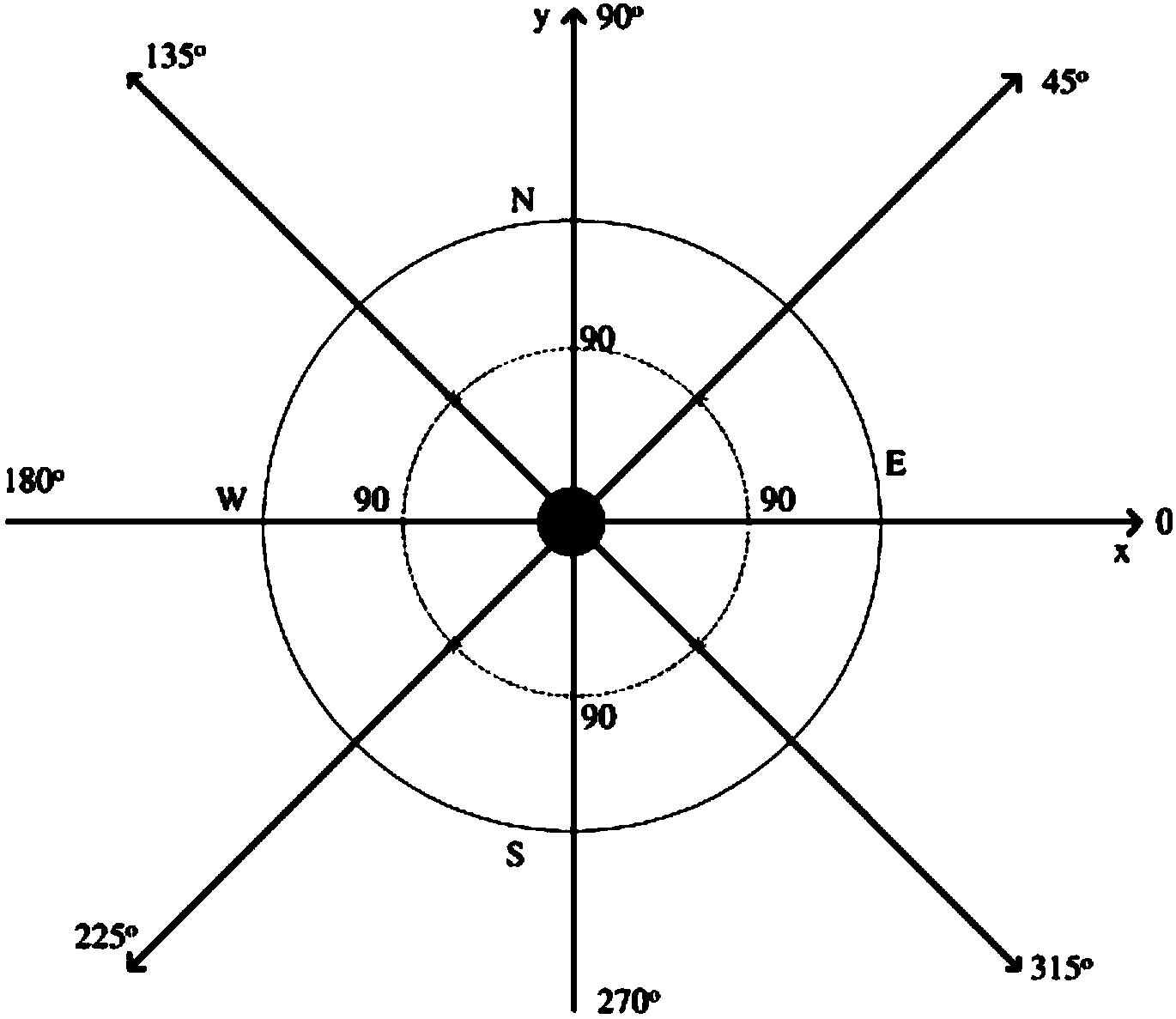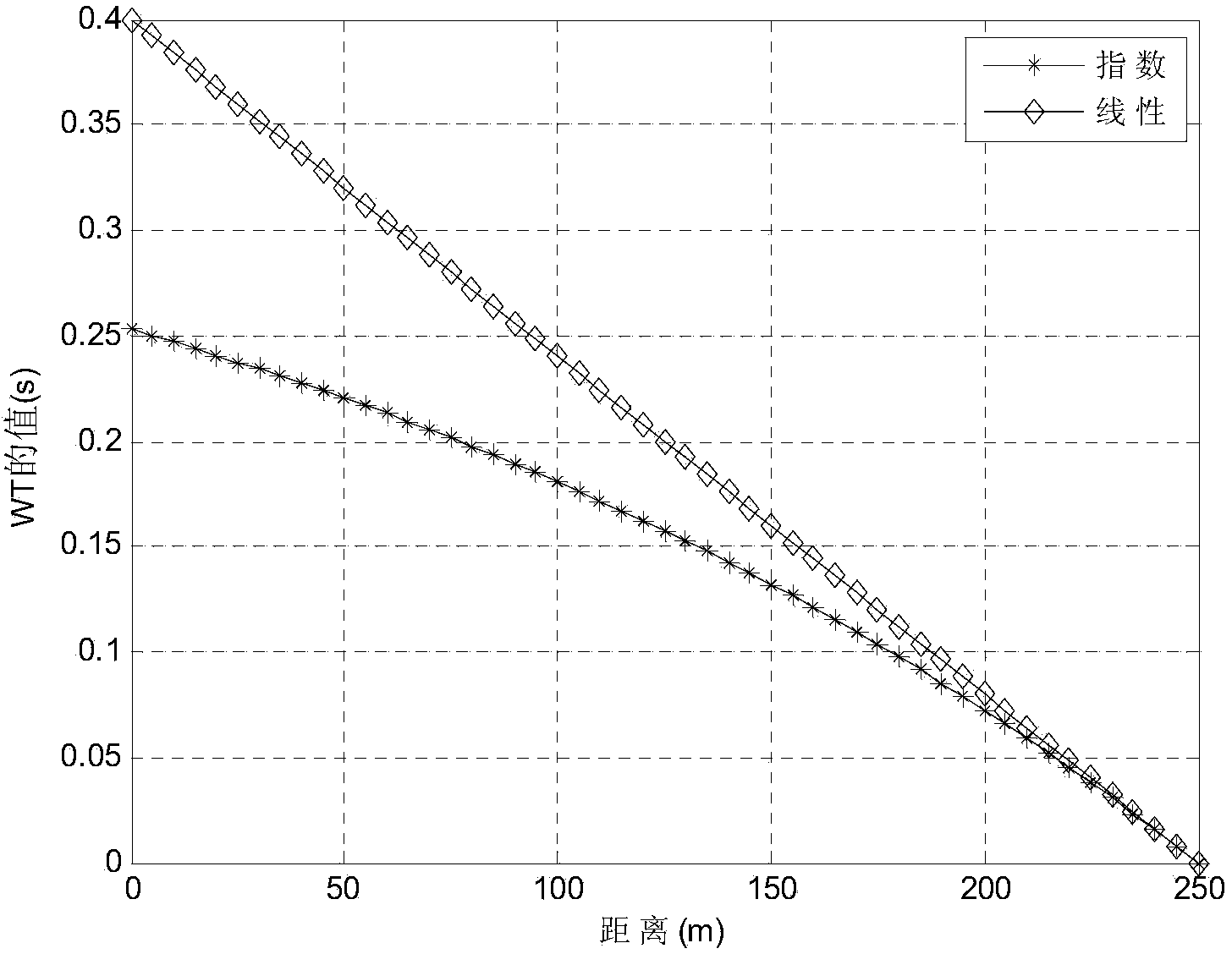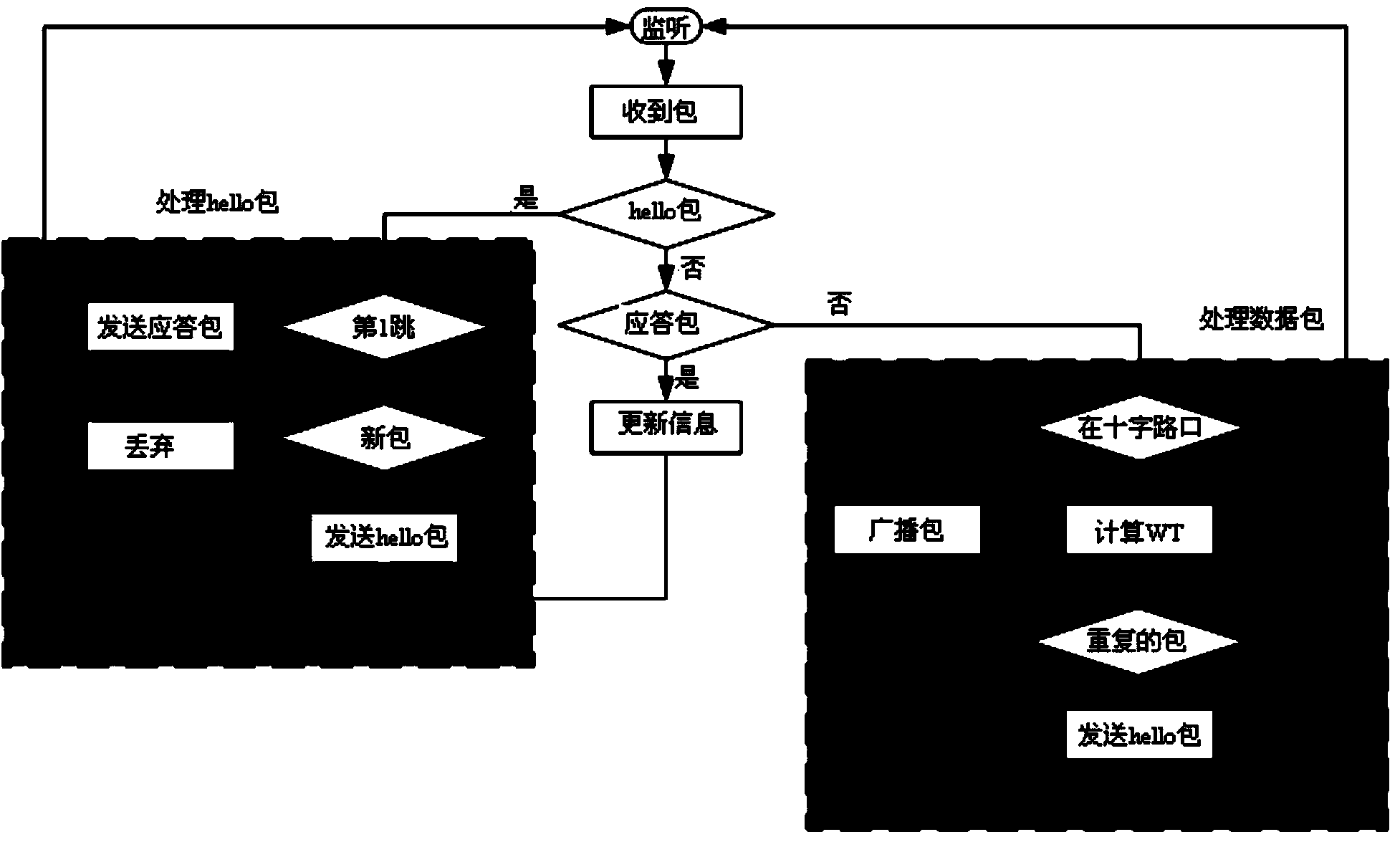Multi-hop warn broadcasting method for urban VANETs
A city, MBW-ONE technology, applied in the direction of broadcasting specific applications, branch offices providing special services, data exchange details, etc., can solve the problems of low broadcast redundancy and delay, incomplete suitability, information redundancy, etc. The effect of network overhead
- Summary
- Abstract
- Description
- Claims
- Application Information
AI Technical Summary
Benefits of technology
Problems solved by technology
Method used
Image
Examples
specific Embodiment approach 1
[0027] Specific embodiment one: the multi-hop warning broadcasting method of a kind of city VANETs of the present embodiment is specifically prepared according to the following steps:
[0028] Step 1. In the neighbor list, determine the forwarding node and the direction of the forwarding node and the broadcast communication area according to the direction of the car; wherein, the car is divided into two groups on the road; the direction of the car is the opposite direction; the car is divided into four groups at the intersection The broadcast communication area composed of four directions where the direction of the car is an intersection is as follows: figure 1; Neighbor list is to adopt MBW-ONE and MBW-TWO two kinds of methods to realize MBW broadcast protocol respectively; The neighbor list adopted by MBW-TWO selects the relay node, or the neighbor list (neighbor list content is self-defined) and select relay nodes, two strategies, MBW-ONE and MBW-TWO, can be used to forward...
specific Embodiment approach 2
[0040] Specific embodiment 2: The difference between this embodiment and specific embodiment 1 is that in step 2, the MBW-ONE or MBW-TWO method is used to determine the neighbor node in the neighbor list according to the distance between the current forwarding node and the neighbor nodes of the forwarding node The specific process of forwarding probability Pi:
[0041] In order to limit the number of cars that rebroadcast a message, the WT mechanism for calculating the forwarding message has also been done in previous research work. In the location-based broadcast protocol, the typical WT calculation method is to use some related factors to design the waiting time function, such as broadcasting The infinite communication radius R of the car, the distance between the sender and the receiver, the number and speed of neighbor cars, etc.; the waiting time T defer is called the delay calculation function is given by the following equation (1),
[0042] T ...
specific Embodiment approach 3
[0054] Embodiment 3: The difference between this embodiment and Embodiment 1 or 2 is that in step 2, both MBW-ONE and MBW-TWO use the hello packet to maintain the neighbor list, and the hello packet contains the Hello field, Position field, Direction field, Hop domain, SID domain, MID domain and VID domain; Wherein, Hello domain represents hello bag, and the position of Position domain mark automobile, and the value of Direction domain is relative to the direction (four directions of intersection) of current forwarding node, and Hop means The hop count of the hello packet, the SID field represents the source node ID number, the MID value is the source node information ID number, and the VID field records the vehicle ID number; when a node receives the hello packet and the Hop field is 0, the MID is saved in pairs and SID; hello packet is 0.1 ~ 2Hz. Other steps and parameters are the same as those in Embodiment 1 or Embodiment 2.
PUM
 Login to View More
Login to View More Abstract
Description
Claims
Application Information
 Login to View More
Login to View More - R&D
- Intellectual Property
- Life Sciences
- Materials
- Tech Scout
- Unparalleled Data Quality
- Higher Quality Content
- 60% Fewer Hallucinations
Browse by: Latest US Patents, China's latest patents, Technical Efficacy Thesaurus, Application Domain, Technology Topic, Popular Technical Reports.
© 2025 PatSnap. All rights reserved.Legal|Privacy policy|Modern Slavery Act Transparency Statement|Sitemap|About US| Contact US: help@patsnap.com



